Craft vs Wordpress: A Definitive Guide (Why We Choose Craft)
If you automatically think of WordPress any time you hear the words “content management system,” you're not alone. WordPress is currently the most popular CMS out there, with over 60 million websites to its name.
That’s about 33% of the content management system market share, a portion that’s significantly larger than most of its competitors.
But just because something is popular doesn’t mean that it’s the best product available. WordPress is notorious for security breaches, vanilla templates, and clunky code, none of which are doing its users any favors.
And because the platform is so popular, it can be difficult to tell the difference between a real web developer who codes their websites by hand and someone who calls themselves a developer simply because they can install a pre-built theme.
Trust us when we say that if you really want to stand out from the competition and make a lasting impression with your audience, you’re going to want the former, not the latter.
That’s why we at Trajectory are part of a growing community of web developers who have ditched WordPress for something way better: Craft CMS.
But deviating from what could be considered the industry norm doesn’t make sense to everyone at first. Over the years, we’ve needed to explain or defend this decision to countless potential clients, team members, and even competitors. And even then, sometimes the benefits that Craft offers over WordPress aren’t as clear as they could be.
So we created this definitive guide to explain once and for all why we use Craft exclusively for the websites we build for our clients. If you’re unsure which CMS to use for your next website, we hope the following will help in your decision-making process.
1. Security
One of WordPress’s biggest downfalls is how susceptible it is to security breaches.
For starters, it’s often a target of cyber attacks simply because it is the most popular CMS. If someone wants to infect as many sites as possible with a piece of malware, WordPress is a goldmine.
To make matters worse, many WordPress sites are poorly maintained and are running outdated software and plugins, leaving a door wide open for attackers to gain access.
This type of security threat made international headlines in 2016 when an unprecedented 11.5 million files — about 2.6 terabytes worth of data — was leaked from the Panama-based law firm Mossack Fonseca in what is now referred to as the Panama Papers Breach. In the aftermath of the leak, it was discovered that the Mossack Fonseca website, which used WordPress, was running an outdated version of Revolution Slider (now renamed Slider Revolution).
Mossack Fonseca was the fourth-largest offshore law firm in the world at the time and was likely targeted due to its dealings with some of the most powerful figures in the world — 143 politicians, including 12 national leaders, plus their families and close associates.
But Revolution Slider is also the most popular slider plugin on WordPress, with more than 2.3 million users worldwide. That breach could have happened to any one of them.
The Panama Papers Breach may be an extreme example, but it’s far from the only one. In September 2018, thousands of WordPress-based websites were compromised when hackers gained access through outdated plugins. Just a few months later in November, a bug in one of the most popular GDPR plugins WP GDPR Compliance was exploited, allowing hackers to gain almost complete control over vulnerable sites. And in January 2019, the popular WPML (or WP MultiLingual) plugin came under fire after a disgruntled former employee exploited a vulnerability in the product, obtaining users’ contact information and defacing the company website.
And while you might be able to avoid security breaches for a while by installing updates promptly, there’s still a bigger, underlying issue at hand.
The problem is that most WordPress updates are essentially just band-aids, released specifically to patch up these kinds of issues.
Craft takes a proactive approach to preventing security threats to ensure that this doesn’t happen on their platform. The development team routinely checks lines of code and tests for vulnerabilities using third-party automated auditing software.
In fact, since launching in 2012, Craft has experienced only 8 minor security issues, and none on the scale of those listed above. WordPress, on the other hand, has had more than 1,500 documented exploits ranging from minor to very, very major.
That kind of security is invaluable to any industry where you regularly deal with sensitive customer information. According to a 2016 survey, 92% of online customers say they’re concerned about the privacy and security of their data, while 57% of consumers don’t trust brands to use their data responsibly (most don’t even trust brands with a password).
And considering the many privacy scandals that have come to light since that survey — Cambridge Analytica, anyone? — we can’t imagine those numbers are any more favorable now.
However unlikely a breach may be in Craft, it’s still a good idea to be prepared for the worst. To that end, the Craft team designed their CMS to quickly back up your site whenever needed. In the event of a breach, you can easily deploy a backup version of your site on a new server in just minutes.
All of this, plus Craft’s ongoing preventative updates, make it far and above the most secure CMS available at this time.
2. SEO
Let’s get one thing straight before diving into this section: the CMS you choose doesn’t make or break your search rankings. Ultimately, your Google page position depends on a whole host of other factors, from the content you publish to your site’s load speed, and more.
However, your CMS should make it easier for you and your team to manage all of those factors. And most of the time, this happens through the help of a plugin.
For years, one of the best SEO plugins out there has been Yoast for WordPress. The plugin handles all of your technical and on-page SEO needs, from generating sitemaps and canonical URLs, to identifying keyword gaps in your blog content. And if need be, your web developer can manually edit your website’s robots.txt and .htaccess files to get things looking just the way you want them.
These capabilities have given Yoast quite a reputation. In fact, the idea of losing Yoast’s SEO support has been a concern for many of the clients we’ve worked with who previously used WordPress.
If that’s a concern for you, too, then you can take a deep breath and relax now — Craft has a plugin called SEOmatic that can blow Yoast out of the water any day.
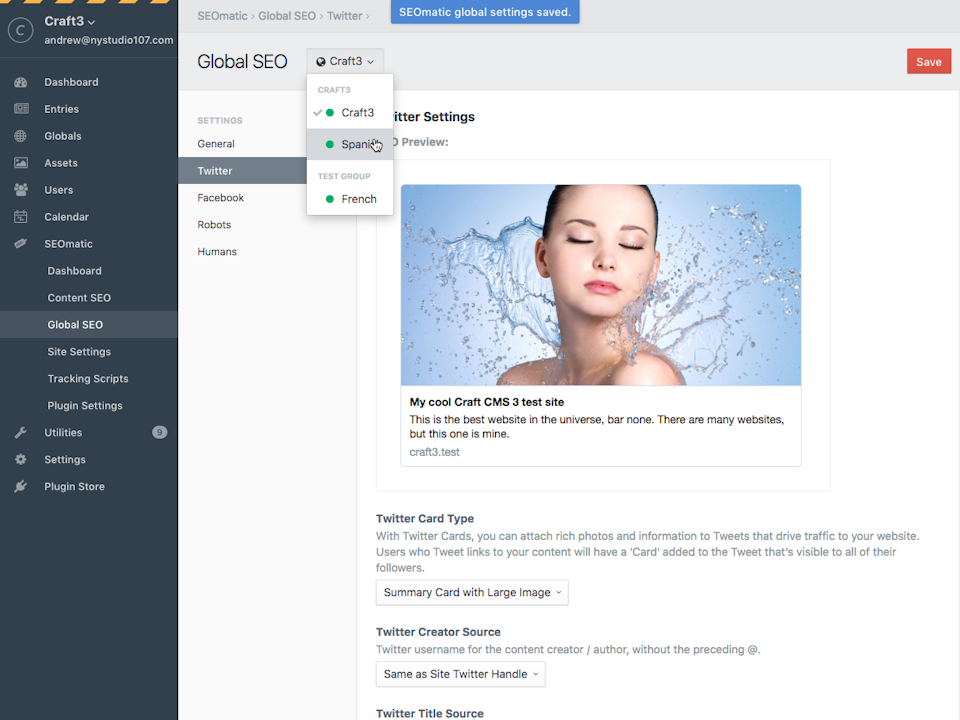
SEOmatic bills itself as a “turnkey SEO system,” and rightly so. As soon as it is installed on your Craft site, it automatically renders metadata on all of your pages and creates sitemaps for anything with a public URL — all without the need for any extra template code. It also implements:
- JSON-LD structured microdata
- Twitter Cards tags
- Facebook OpenGraph tags
- Robots.txt bot directives
- Humans.txt authorship accreditation
- HTML meta tags
Now, if you do happen to be an SEO buff and want to have direct control over that metadata, you can. But the real beauty of how SEOmatic works with Craft is that you don’t have to worry about SEO at all if it’s not in your wheelhouse.
SEOmatic makes things foolproof, handling everything seamlessly and automatically behind the scenes using the SEO best practices outlined by Google. You can manage your website — add blog posts, remove team members, etc. — without ever giving SEO a second thought.
How’s that for easy to manage?
And the cherry on top of the SEO sundae is that Moz — one of the leading authorities on SEO — uses Craft and SEOmatic, not WordPress and Yoast. One of the biggest names in the industry trusts these tools with its entire search engine presence, and if it’s good enough for them, it’s good enough for us.
3. Speed
If you’ve spent any time working with or browsing on WordPress websites, you’re likely no stranger to their excruciatingly slow load times. It’s an issue that plenty of WordPress users have noticed already:
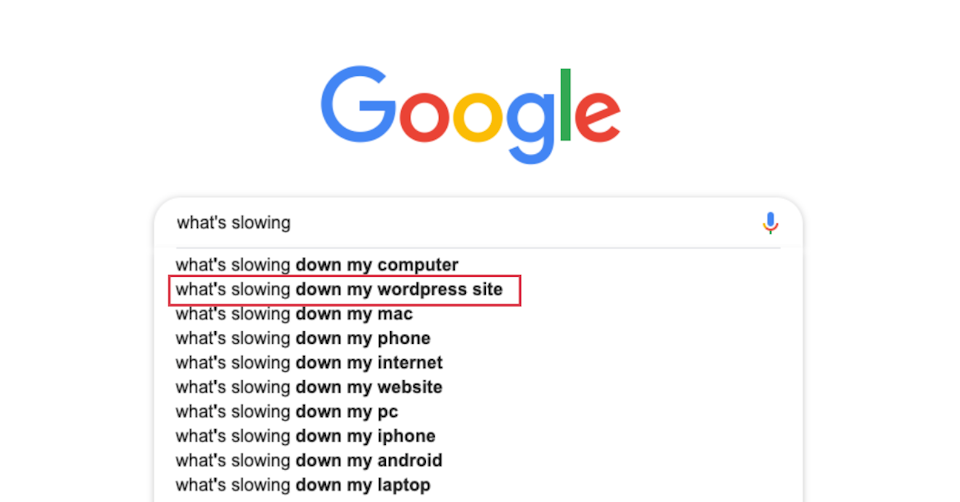
If left unchecked, slow load times can mean a huge problem for your business. On mobile devices — from which about half of the world’s website visits originate — 53% of pages are abandoned if they take longer than 3 seconds to load. For comparison's sake, the average page load time is 19 seconds, which is about as long as it takes to sing your ABCs.
On top of that, conversion rates fall by 12% for every extra second that it takes your website to load. For every 2 extra seconds, bounce rates increase by 50%.
But that’s not a problem that we experience. Sites built properly with Craft are some of the fastest on the web — and when we say fast, we mean really fast.
In fact, the sites we build for our clients score a 100 on Google PageSpeed for desktop and mid-90s for mobile, which is way higher than the average website:
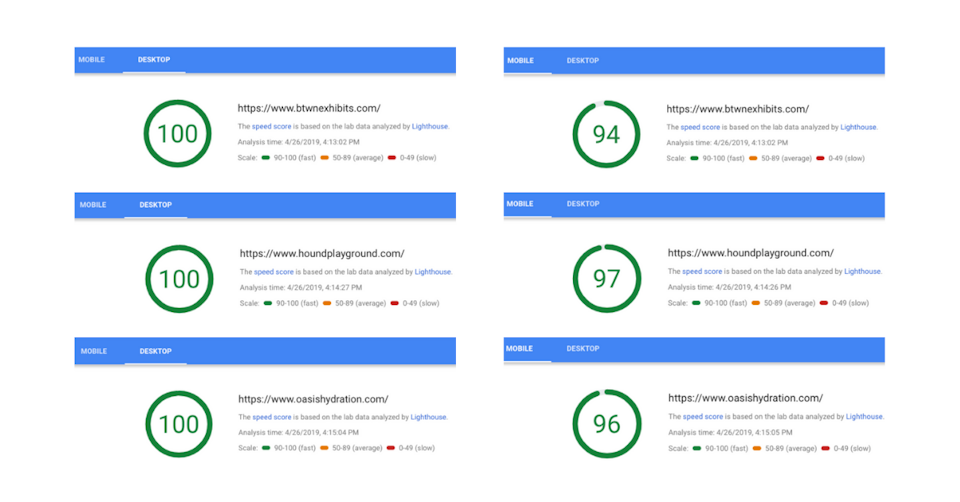
That’s good news for you because the faster your website loads, the better the experience your customers have with the digital side of your business. Those great experiences are the basis of a good customer relationship, and they’re what will keep customers coming back to you again and again.
Faster load speeds are also a huge help in the SEO department because Google’s algorithm looks at both site speed and page speed as ranking signals.
Another important signal? Dwell time, which decreases each time a visitor clicks away in frustration over a page that still hasn’t loaded.
Part of the reason our websites manage to clock such unheard-of load speeds is that Craft doesn’t come pre-packed with unnecessary plugins and poorly written code the way many WordPress sites do. But another reason is that the flexible nature of Craft allows us to use even more specialized tools to speed up website performance.
For example, we pair Craft with super fast AWS S3 bucket cloud storage, which houses all of the image assets for a site. It then serves those images through Imgix, an image optimization and content delivery network (CDN) that automatically crops, sizes, and optimizes all the images on your site.
As a result, your website loads with lightning speed and your visitors stay on your site for longer, giving them more time to become loyal customers.
4. No themes
Coding can make or break a website.
The biggest reason WordPress is the most widely used CMS in the world is that its templated themes make it accessible to nearly anyone. You don’t have to be able to code or hire a web design agency to get something up and running — if you want a functional website, all a WordPress developer really has to do is choose your favorite look from the list and click, “Install.” It’s fast, it’s easy, and it’s budget-friendly.
But those themes come with a catch: They’re bogged down with extra features that are intended to help businesses do more with a site, but that actually get in the way of its performance. And because the marketplace is so big, the quality of each theme’s coding varies drastically. Some of it is pretty horrific and makes for a terrible user experience for your website’s visitors.
To get something truly custom with WordPress, your developer ends up spending way more time removing unnecessary features and plugins and tweaking lines of HTML than they would have if they had started at square one. And then, of course, there’s the chance that removing something makes the whole theme break on the next update.
Out of the box, Craft is a blank slate.
There are no themes or preset templates. Everything is designed and coded and built by hand from scratch.
So while anyone can install a theme and call themselves a WordPress developer, Craft developers are, by necessity, experts at what they do. And in the end, the quality of the two products delivered speak for themselves.
5. Flexibility
One of the best things about ditching WordPress for Craft is the superior design flexibility and consistency that Craft brings to the table.
WordPress started as just a blogging platform, and in the years since, it hasn’t evolved much beyond that original purpose. Unless you want your website built with the same cookie-cutter templates that every other business in your industry is using, your developer will need to do a lot of tweaking and retooling to get WordPress to look like a full-fledged website.
Craft keeps customization at the forefront of what they do. They famously make no assumptions about your content — instead, they allow developers like us to set up the exact custom fields you need for each element.
As for sections, Craft keeps it simple here, too. It comes equipped with three different section types, which developers can use depending on the function the section should perform:
- Singles: For pages with a unique structure and content that isn’t used anywhere else on your site, like your homepage.
- Channels: For structured, similar content that makes sense as a group or may be reused elsewhere on your website, like news or blog posts.
- Structures: For content that needs to exist in a specific order or hierarchy, like recipes, products, or individual team members.
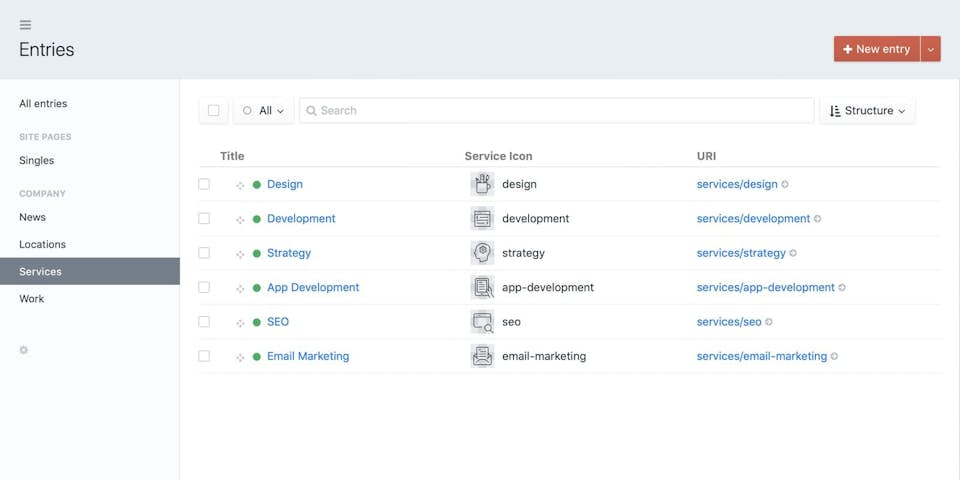
Within each section, we can create specific entry types that give your website a flexible data structure, regardless of what your content may be. For example, if you want to be able to post both written articles and YouTube videos to your company’s blog, our development team might create separate entry types for each.
If this all sounds a little technical, don’t worry — all that really means is that your developers have much more creative flexibility in Craft than they do in WordPress (or any other CMS, for that matter). We select the right section type for each part of your website based on the project vision and set it up for you so that adding new content is a streamlined, painless process.
This flexible data structure is exactly how we built Mr. Stat, a website that keeps track of every golf record that’s been set in the state of Georgia for the past several decades. The site features tens of thousands of individual records and still performs flawlessly. And as more records are set, our client can easily add them using the process outlined above.
This process is also what allows us to design websites that are so visually different from each other. In addition to the golf record site above, we’ve designed for a whole array of industries, from trade show exhibit designers to helicopter firefighters (and everything in between).
6. Ease of use for clients
Of course, even the most technically sound CMS in the world doesn’t help anyone if you can’t navigate it on your own once your website is live. But Craft already thought of that when they built their platform.
On the back end, Craft’s interface is clean and simple. The dashboard shows users only the tools they need, unlike the cluttered sidebars that WordPress users know all too well.
This simplicity makes it easy for clients to add more content to their site later — like new team members or regular blog posts — without worrying they’ll get lost in the back end or click the wrong button and break something.
Another feature our clients love just as much as we do is the Live Preview function. They can see both the content editor and an accurate sneak peek at how their published article will look with just the click of a button.
This feature effectively prevents the 40-tab phenomenon that’s all too familiar to anyone who’s spent any time in WordPress: you tweak then preview, tweak then preview, and before you know it, you can’t tell which tab is the original and which is the revision.
7. Big community of users
WordPress may power 30% of the web, but Craft is well on its way to catching up. It’s been used to build some of the most popular websites in the world, including Barefoot Contessa and the Associated Press:
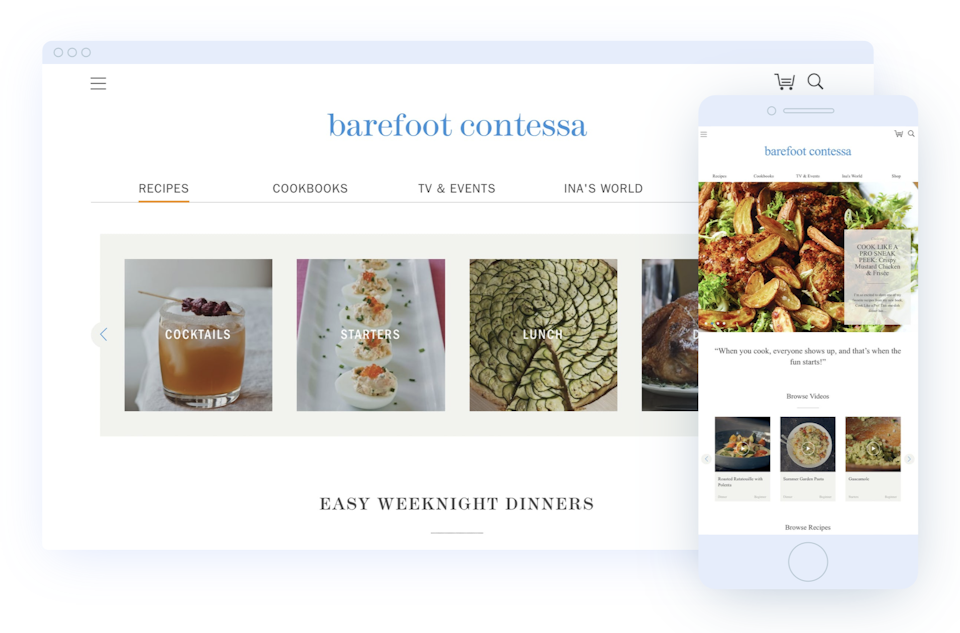
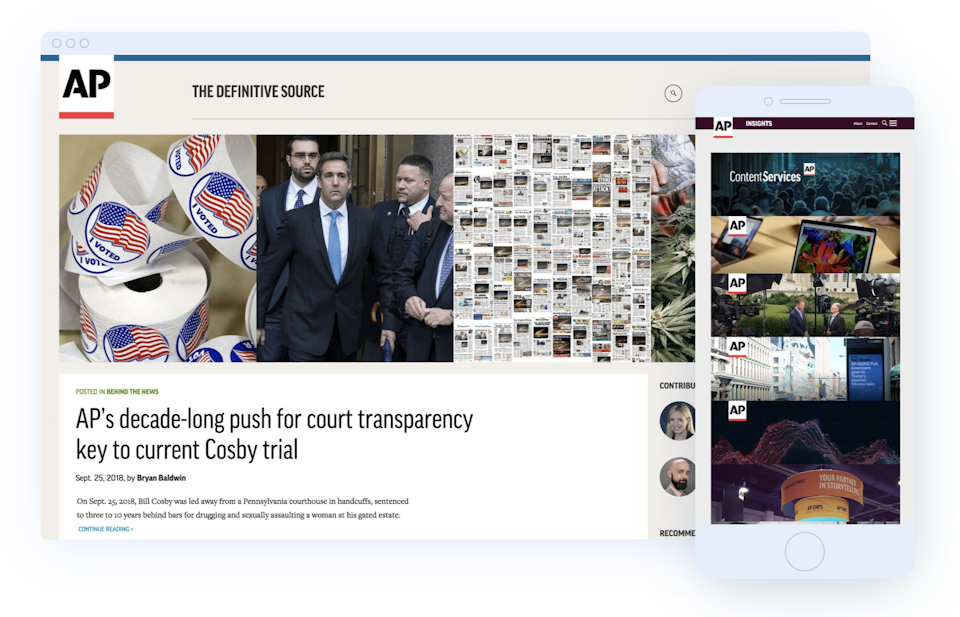
Craft is is also trusted by heavy hitters like:
- Adobe
- Apple
- Duck Brand Tape
- Microsoft
- Netflix
- PBS
- Salesforce
- And more
The fact is that Craft is rapidly becoming the most trusted CMS available — and its product is improving just as quickly. The bigger the user community, the more data Craft’s development team has to draw from to know where changes and tweaks are needed to make their product the best it can possibly be.
And if developers do need support while building out a site in Craft, it’s super easy to get help. Craft’s technical and customer support teams are active on Twitter and StackExchange and are quick to respond when we run into issues. This way, we can be sure that your site launches without any confusing technical issues.
Compare that to WordPress, which leaves developers to figure things out for themselves in a forum. That takes up more of their time and can drive the final cost of your website higher.
Ready for a stellar new website?
We’re ready for takeoff! Tell us a little about your business and we’ll reach out to get your project underway.